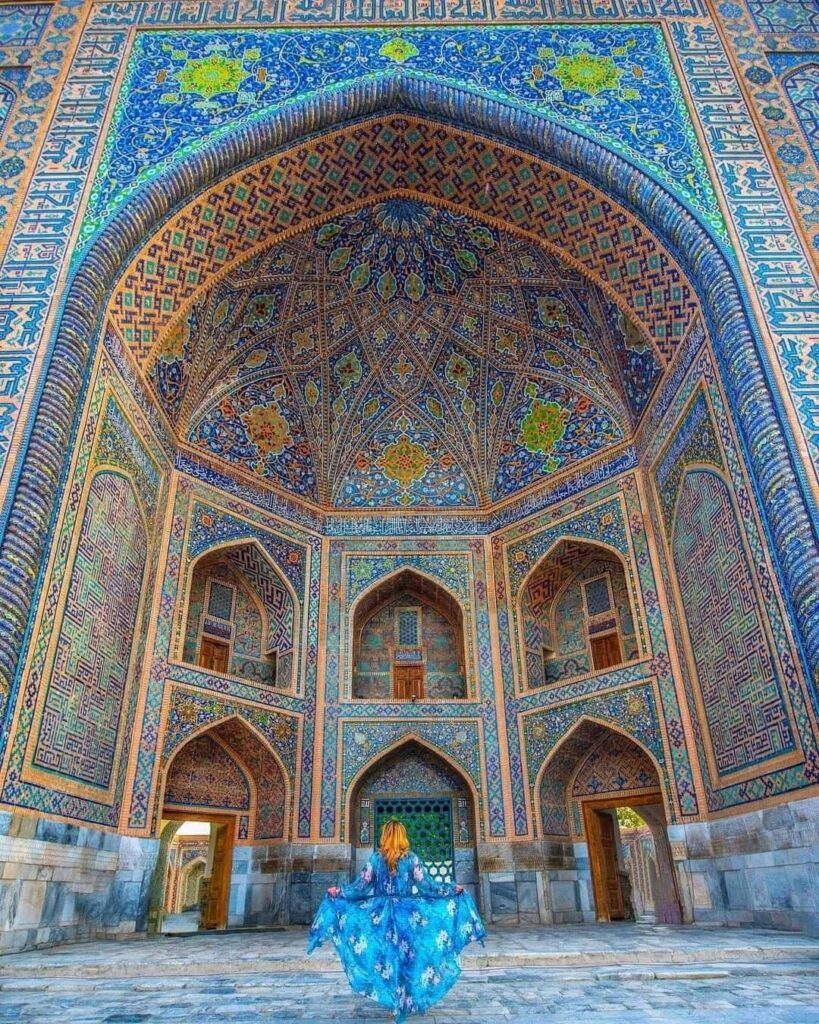Introduction
Nestled in the heart of Central Asia, Uzbekistan is a land of captivating contrasts, where the ancient and the modern coexist in perfect harmony. Beyond its rich cultural heritage, this enchanting country boasts a remarkable architectural legacy that has captivated the hearts and minds of travelers from around the world. From the towering minarets of Samarkand to the intricate tile work of Khiva, Uzbekistan’s architectural masterpieces stand as a testament to the ingenuity, artistry, and resilience of its people.

In this blog post, we’ll embark on a journey through Uzbekistan’s most breathtaking architectural gems, exploring the stories and traditions that have shaped these timeless structures. Whether you’re a history buff, a design enthusiast, or simply someone who appreciates the beauty of the built environment, this post will take you on a captivating exploration of Uzbekistan’s architectural wonders.
The Majesty of Samarkand
Samarkand, the legendary city that once served as the capital of the mighty Timurid Empire, is undoubtedly one of Uzbekistan’s architectural crown jewels. As you wander through its streets, you’ll be greeted by a dazzling array of structures that reflect the city’s rich cultural heritage and the grandeur of its past.
One of the most iconic landmarks in Samarkand is the Registan, a magnificent ensemble of three madrassahs (Islamic schools) that date back to the 15th and 17th centuries. Adorned with intricate tile work, ornate domes, and towering minarets, the Registan is a true masterpiece of Central Asian architecture. The harmonious interplay of blues, greens, and golds creates a mesmerizing visual spectacle, transporting visitors to a bygone era of opulence and scholarly pursuits.
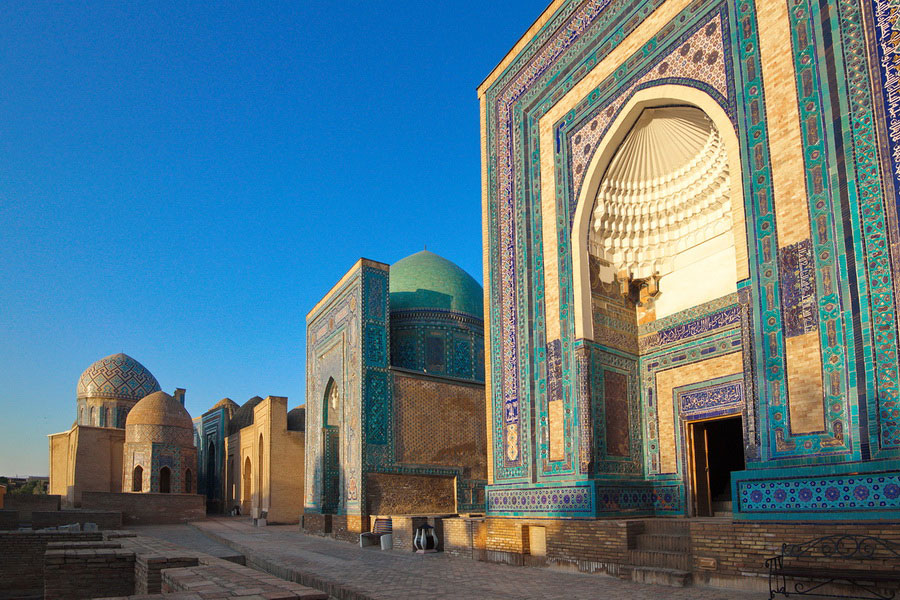
Another awe-inspiring site in Samarkand is the Gur-e-Amir, the mausoleum of the renowned conqueror Timur (also known as Tamerlane). This exquisite structure, with its turquoise-tiled dome and intricate decorative patterns, is a testament to the architectural prowess of the Timurid dynasty. The interior of the mausoleum is equally breathtaking, featuring intricate calligraphy, delicate mosaics, and the simple yet elegant tomb of Timur himself.
Samarkand’s architectural wonders extend beyond the city’s iconic landmarks. The Bibi-Khanym Mosque, with its massive portal and towering minarets, is a stunning example of Timurid architecture, while the Shah-i-Zinda necropolis, a complex of mausoleums and shrines, showcases the region’s rich funerary traditions.
As you wander through Samarkand, you’ll be struck by the harmonious blend of Persian, Turkic, and Islamic influences that have shaped the city’s architectural landscape. Each structure, with its unique design and ornamental elements, tells a story of Samarkand’s illustrious past and the enduring legacy of its builders.
The Enchanting City of Khiva
If Samarkand is the jewel in Uzbekistan’s architectural crown, then Khiva is the enchanting gem that captivates the heart. This walled city, a UNESCO World Heritage Site, is a living museum of Central Asian architecture, preserving the region’s rich cultural heritage with stunning precision.
At the heart of Khiva lies the Ichan-Kala, the inner city that has been meticulously restored to showcase the city’s architectural splendor. As you enter through the imposing Ota-Darvoza gate, you’ll be greeted by a labyrinth of narrow streets, lined with beautifully preserved mud-brick buildings, mosques, and madrassahs.

One of the most remarkable structures in Khiva is the Kalta Minor, a towering minaret that was intended to be the tallest in the region. Though the original plan was never fully realized, the minaret’s striking turquoise-tiled facade and distinctive shape have become an iconic symbol of the city. Nearby, the Juma Mosque, with its intricate wooden columns and exquisite tile work, is a testament to the region’s skilled artisans and their mastery of traditional building techniques.
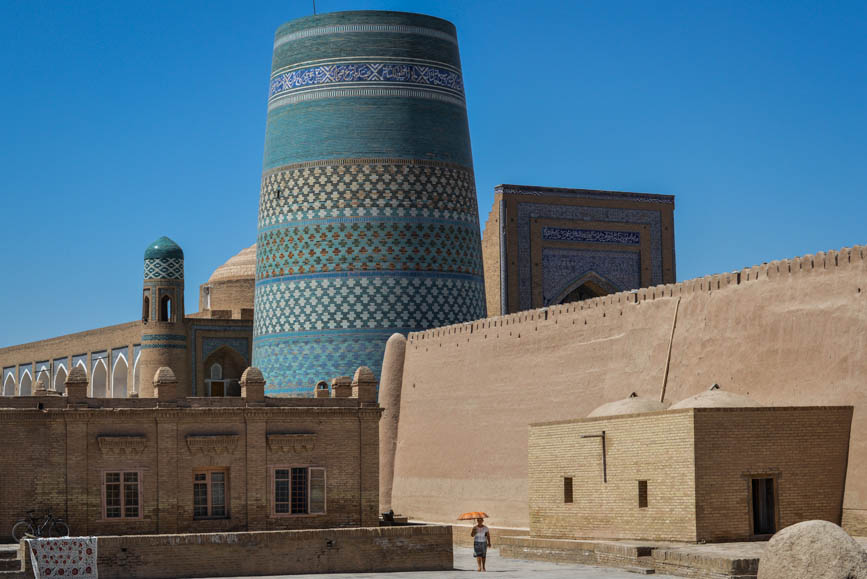
Exploring Khiva’s architectural wonders is like stepping back in time. The Tash-Khauli Palace, a 19th-century structure that served as the residence of the last Khivan khans, is a stunning example of the region’s decorative arts. Its ornate facades, intricate carvings, and beautifully appointed interiors provide a glimpse into the lavish lifestyles of Khiva’s former rulers.
As you wander through the winding streets of Khiva, you’ll be struck by the harmonious integration of architecture, culture, and daily life. The city’s well-preserved structures, from the towering minarets to the humble dwellings, create a captivating tapestry that transports visitors to a bygone era, inviting them to immerse themselves in the timeless beauty of Uzbekistan’s architectural heritage.
The Grandeur of Bukhara
Bukhara, another jewel in Uzbekistan’s architectural crown, is a city that has long been celebrated for its rich cultural and intellectual legacy. Known as the “Noble City,” Bukhara is home to a breathtaking array of architectural masterpieces that have withstood the test of time.
One of the most iconic structures in Bukhara is the Poi Kalyan complex, which includes the towering Kalyan Minaret, the Kalyan Mosque, and the Mir-i-Arab Madrassah. The Kalyan Minaret, standing tall at over 47 meters, is a true engineering marvel, with its intricate brick patterns and elegant proportions. The Kalyan Mosque, with its ornate tile work and expansive courtyard, is a testament to the region’s mastery of Islamic architecture.
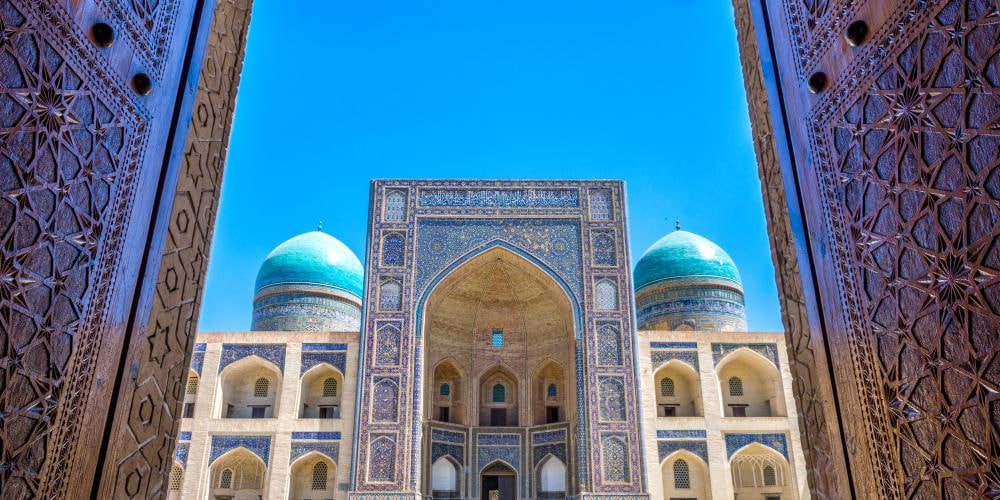
Another must-see site in Bukhara is the Ark, a sprawling fortress that has served as the political and military center of the city for centuries. Within the Ark’s walls, you’ll find the magnificent Juma Mosque, with its intricate wooden columns and exquisite tile work, as well as the Zindan, a former prison that now serves as a museum, offering a glimpse into the city’s tumultuous past.
Bukhara’s architectural wonders extend beyond its iconic landmarks. The city is home to a wealth of beautifully preserved madrassahs, caravanserais, and mausoleums, each with its own unique design and cultural significance. The Nadir Divan-Begi Madrassah, with its ornate facade and intricate tile work, is a prime example of the region’s architectural sophistication, while the Chor Minor, a distinctive four-minaret structure, is a beloved symbol of Bukhara’s enduring cultural identity.
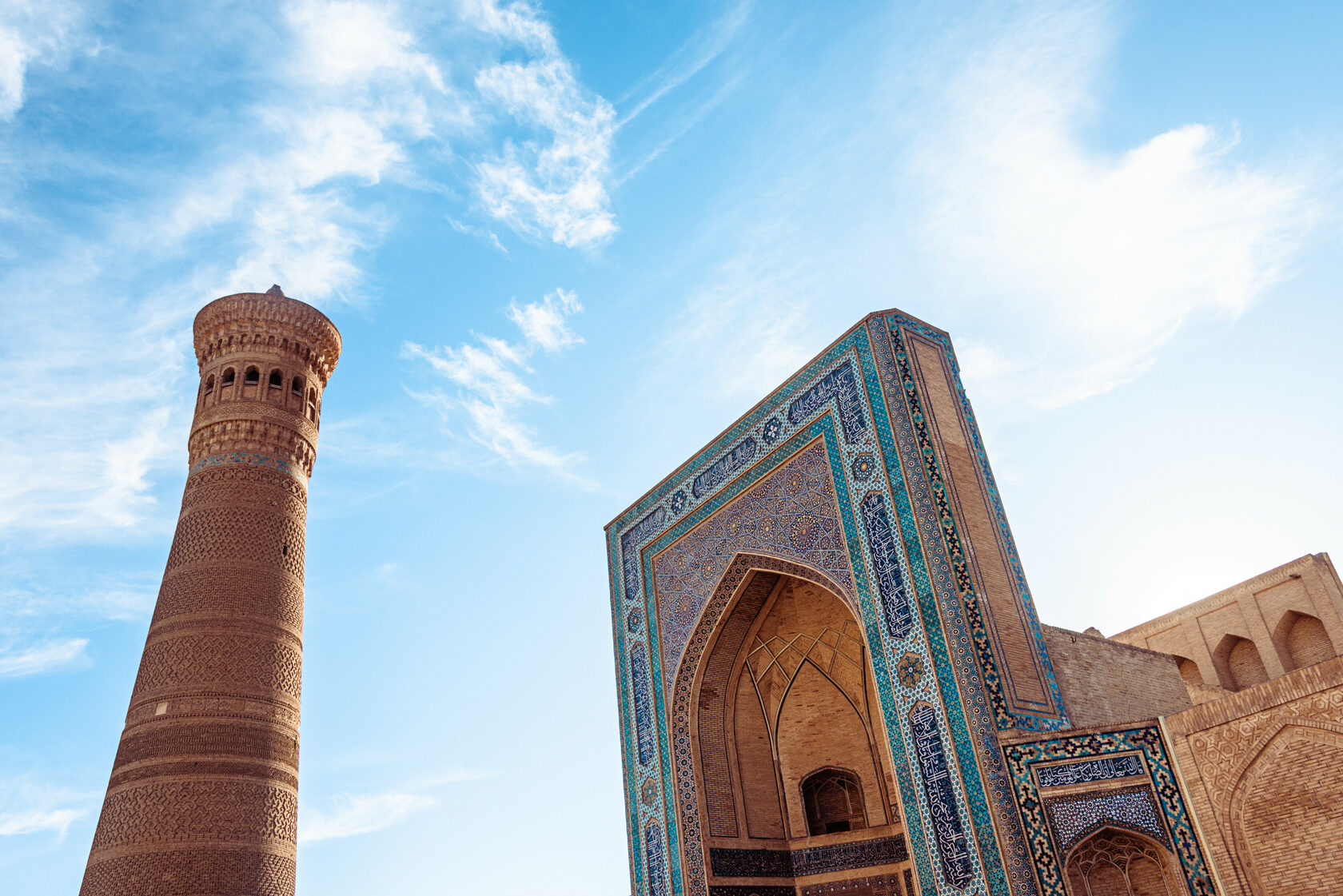
As you explore Bukhara, you’ll be struck by the harmonious integration of architectural styles, from the grand, imposing structures of the Timurid era to the more humble, yet equally captivating, buildings that reflect the city’s long and storied history. Each structure, with its intricate details and rich symbolism, tells a story of Bukhara’s past, inviting visitors to uncover the layers of history that have shaped this remarkable city.
The Architectural Gems of Shakhrisabz
While Samarkand, Khiva, and Bukhara are undoubtedly the architectural jewels of Uzbekistan, the lesser-known city of Shakhrisabz also boasts a wealth of stunning architectural wonders that deserve recognition.
Shakhrisabz, the birthplace of the legendary conqueror Timur, is home to a remarkable collection of Timurid-era structures that showcase the region’s architectural prowess. The most impressive of these is the Ak-Saray Palace, a colossal structure that once served as Timur’s summer residence. Though much of the palace has been reduced to ruins, the remaining facades and architectural fragments are a testament to the grandeur and ambition of the Timurid dynasty.

Another architectural gem in Shakhrisabz is the Dorut Tilovat complex, which includes the Kok-Gumbaz Mosque, the Hazrat-i-Imam Mausoleum, and the Dorus Saodat ensemble. The Kok-Gumbaz Mosque, with its striking blue dome and intricate tile work, is a prime example of the region’s mastery of Islamic architecture, while the Hazrat-i-Imam Mausoleum, with its ornate decorative elements, pays homage to the city’s rich religious heritage.
As you wander through the streets of Shakhrisabz, you’ll also encounter a wealth of other architectural gems, from the grand caravanserais that once served as rest stops for travelers to the humble, yet beautifully crafted, residential buildings that reflect the city’s enduring cultural traditions.
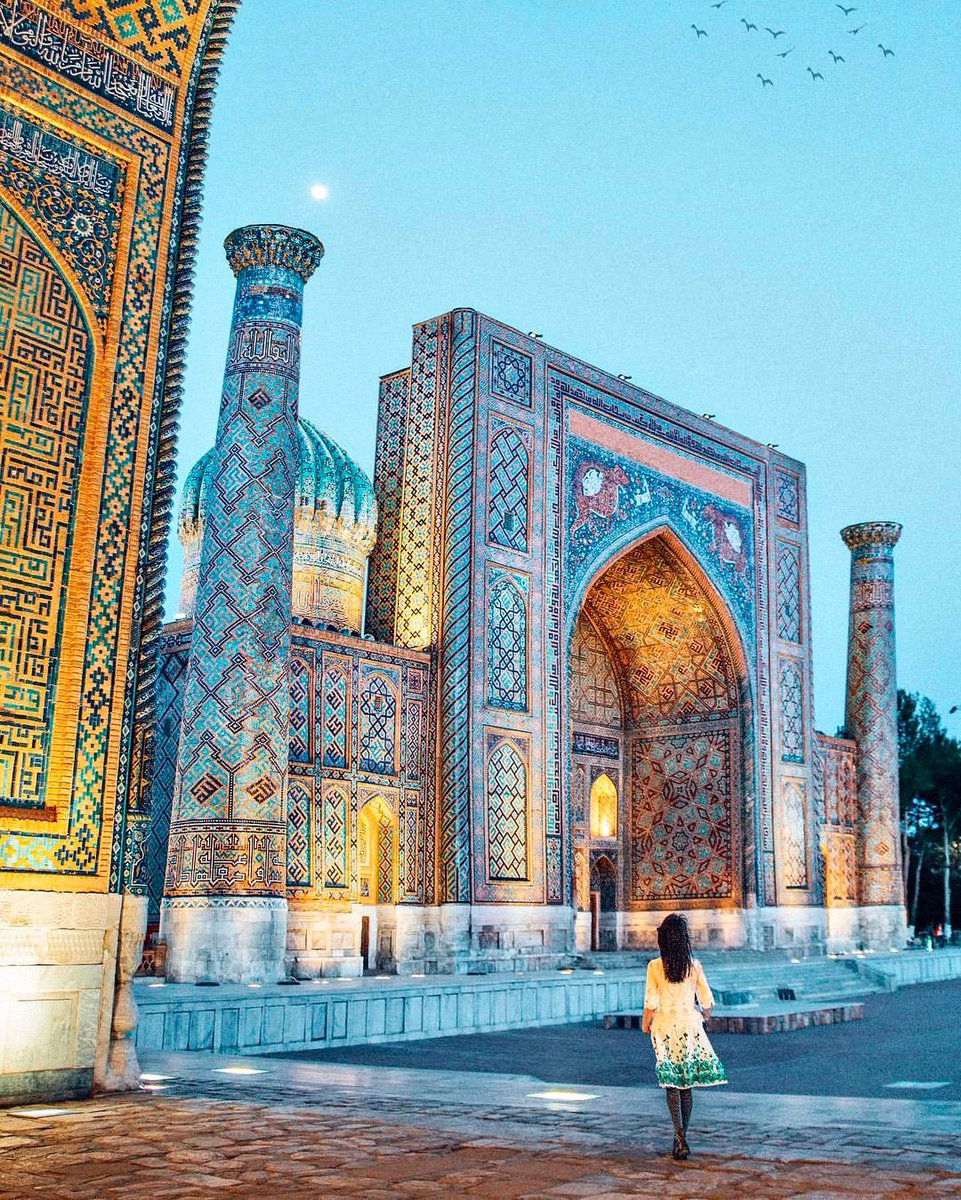
While Shakhrisabz may not enjoy the same level of fame as its more well-known counterparts, its architectural wonders are no less captivating. By exploring this lesser-known gem, visitors can gain a deeper understanding of Uzbekistan’s rich architectural legacy and the enduring influence of the Timurid dynasty on the region’s built environment.
Conclusion
Uzbekistan’s architectural wonders are a testament to the ingenuity, artistry, and resilience of its people. From the towering minarets of Samarkand to the intricate tile work of Khiva, these structures have stood the test of time, preserving the region’s rich cultural heritage and captivating the hearts and minds of travelers from around the world.
As you explore Uzbekistan’s architectural gems, you’ll be transported to a bygone era, immersed in the stories and traditions that have shaped these timeless structures. Whether you’re a history buff, a design enthusiast, or simply someone who appreciates the beauty of the built environment, Uzbekistan’s architectural wonders are sure to leave a lasting impression.
So, pack your bags and embark on a journey through Uzbekistan’s architectural marvels, where the past and present coexist in perfect harmony, and where the beauty of the built environment is a testament to the enduring spirit of this remarkable country.
